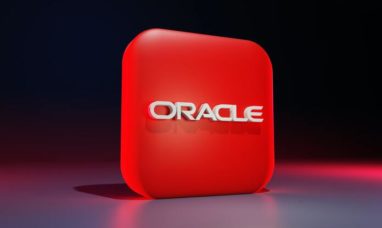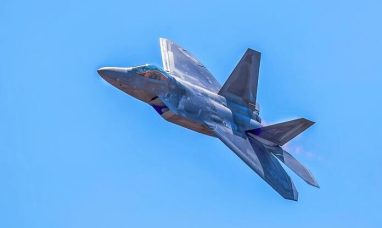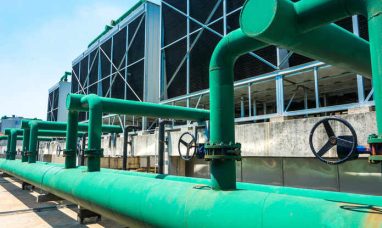BP Stock (NYSE:BP)
Since Bernard Looney became the new CEO of BP (NYSE:BP) and unveiled the company’s new strategy in 2020 to place a greater emphasis on low-carbon energy sources, a lot has happened in the energy sector. The world’s Covid-19 movement limitations have been lifted, which has led to a rebound in energy consumption to pre-pandemic levels. The invasion of Ukraine by Russia and the reaction of the West changed the way that natural gas was supplied to Europe and other parts of the world. Despite Europe’s green aspirations, both of these shocks threw off the energy balance considerably more quickly than they could have been corrected by renewable energy sources.
The “energy trilemma,” which states that energy needs to be cleaner while simultaneously being available and reasonably priced, was first mentioned by BP management last year as a recognition of this. With this acknowledgment, the business has also changed to a higher price set for lengthier planning. BP increased its long-term price expectations for Brent crude to $70 per barrel from $60, Henry Hub natural gas to $4 per mmbtu from $3, and refining margin to $14 per barrel from $12 in the company’s 4Q and FY 2022 results.
Since BP’s cash flow is stronger as a result of the higher prices, the corporation is able to increase the high end of its capital investment estimates by $2 billion annually. BP is now aiming for $14–$18 billion in capital expenditures annually, up from $14–$16 billion in earlier projections. Spending on hydrocarbons will increase by $1 billion, while low-carbon projects will receive a further $1 billion in funding. Additionally, the business will focus its low-carbon initiatives on technologies that have a greater rate of return and be less eager to relinquish its oil and gas output.
Transforming Slower While Performing Better
There were suspicions that BP will scale back some of the company’s renewable energy strategy in the week before the results report. I never anticipated management to phrase it that way. Bad politics would result from that. But it was encouraging to witness the growing dedication to the oil and gas industry. The corporation had intended to decrease oil and gas production from 2300 mboe/d in 2022 to 1500 mboe/d in 2030. With its most recent strategic update, BP currently intends to maintain its current production level of 2300 mboe/d in 2025 and only reduce it to 2000 mboe/d by 2030. In order to offset base decrease, the corporation will increase investment by $1 billion annually on new manufacturing. The company will also scale back its plans for divestment, selling off 200 mboe/d through 2030. The corporation has also taken out any mention of its plans to reduce refining throughput in this decade. Last but not least, BP still intends to grow LNG sales, with 2030 seeing 30 mtpa, double 2019 levels.
BP is raising its investment on low-carbon initiatives by $1 billion annually, although the most recent strategy update places more of an emphasis on projects with higher returns. BP anticipates double-digit returns on investments in hydrogen as well as 15% returns on efforts in biofuels and EV charging. The corporation will take advantage of its refining facilities by employing them as locations for initiatives involving liquid biofuels and hydrogen, and the retail network naturally complements EV charging plans. Except for what is already in the pipeline, BP seems to be downplaying the potential returns from renewable energy sources like wind and solar, which are only estimated to be between 6 and 8%. Particularly solar projects now appear to be restricted to the Lightsource BP joint venture, which is anticipated to self-fund any additional expenditures.
With the higher pricing and more investments, BP now projects that it will generate between $51 and $56 billion in EBITDA by 2030, an increase of between $10 and $12 billion from the previous iteration of the strategy.
Financial Model
The model I use examines EBITDA from the three sources that BP distinguishes in their strategy slide: the production of hydrocarbons, convenience and mobility, and low-carbon energy. I will use BP’s stated assumption of $77 per barrel of Brent for 2023 before switching to $70 for the following years through 2030.
At a given oil price, hydrocarbon EBITDA/boe rises by the 20% that the business anticipates between 2022 and 2023. The model’s values take into account both this increase in margin and fluctuations in the price of oil. Between 2024 and 2030, hydrocarbon EBITDA is anticipated to remain stable at roughly $40 billion/year as rising margins counteract a drop in output. Convenience and Low Carbon EBITDA haven’t changed all that much since the previous model.
The overall EBITDA is then converted by the model to operating cash flow and net income. The capex budget has been raised to $17 billion in 2023 and to $16 billion annually from 2024 through 2030. Starting in 2024, the increasing asset base will result in a small annual increase in depreciation. Due to Rosneft’s withdrawal from the equation, which has a lower tax rate, the effective tax rate has gone up to 40%. Interest costs are estimated to be 3% of debt, and they are determined using annual cash flow and debt repayment.
I have raised the yearly dividend raise estimate from 4% to 10% because of the buybacks’ fast decreasing share count at this price level. This corresponds to the real dividend increase in 2023 as compared to 2022. Even though the payout per share increases at a 10% rate, the dropping share count permits the total amount of dividends paid to grow less than 4% annually. Up until the net debt/(net debt+equity) ratio reaches about 0%, which would occur in 2027, free cash flow after dividends is allocated 60% to buybacks and 40% to debt reduction. Keeping $30 billion in cash on the balance sheet, as it did the previous two years, is assumed to result in net debt. A significant step-up in the payout occurs in 2028 when 40% of FCF is allocated to dividends.
Every year, the model adds net income while subtracting dividends and share buybacks to arrive at the company’s book value. The buyback value is used to determine a share count as well. The company’s price/book value is estimated and tied to levels of return on equity. This makes it possible to estimate the share price.
Results indicate that BP stock price will more than double by 2030 to reach $76.58/ADS, an improvement over the prediction of my previous model. Compared to my previous model, dividend growth is substantially faster. A total return of 14.6% annualized is obtained. When the net debt ratio reaches zero in 2026, it enables a significant increase in the dividend in 2027, pushing it over its $2.52 per year pre-pandemic rate.
About 2.09 billion shares, or 19.75% of Rosneft (OTC:RNFTF), are still owned by BP. On the Moscow Stock Exchange, they are not permitted to sell these shares. Additionally, profits paid in rubles that cannot be transferred outside of Russia are due to BP. Any future Russia-Ukraine peace settlement might bring BP a pleasantly unexpected gain. However, because it is impossible to foresee the outcome at this point, Rosneft and the dividends that BP is entitled to are valued at zero.
Conclusion
BP has come to understand the importance of preserving hydrocarbon output and concentrating on renewable investments in areas where they may generate a respectable return. The expected oil price of $70 and the slower decommissioning of oil and gas assets mean that BP’s ability to earn money from hydrocarbons through 2030 appears to be stable. The expansion on top of this base over the course of the next ten years is provided by low-carbon investments, particularly those in biofuels, EV charging, and hydrogen. Although they are less important, lower-returning wind and solar nevertheless exist in the portfolio.
If BP decides to deploy more lower-returning projects and keep cutting oil production after 2030, the situation might change. If the need for oil and gas is still there, this most recent strategy update gives some assurance that the corporation is reacting to economic signals. Up until that time, BP stock should be able to produce an operating total return of 14.6% every year while also aggressively repurchasing stock and increasing its dividend.
Featured Image: The Express Tribune @ British Petroleum slides into quarterly loss as low oil prices bite









